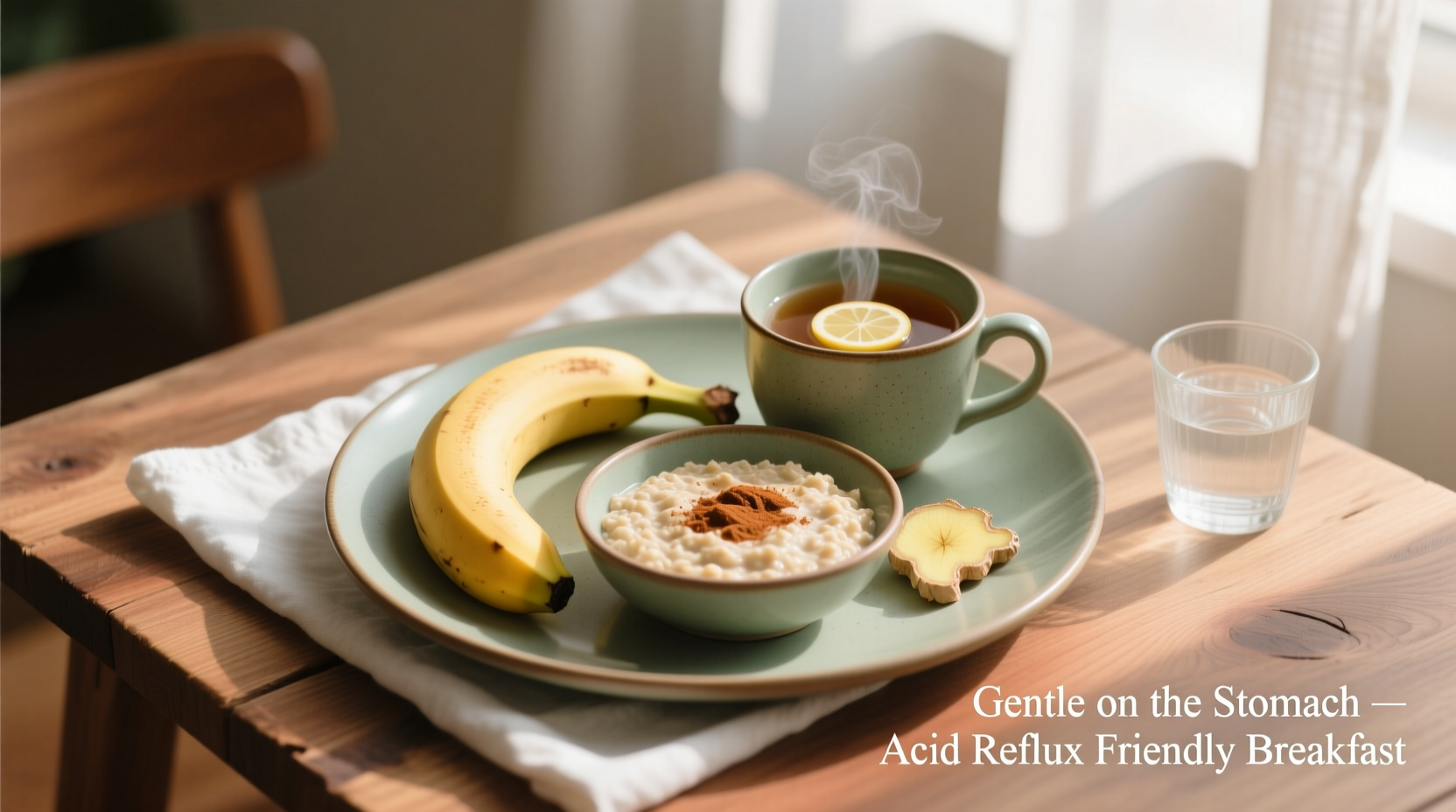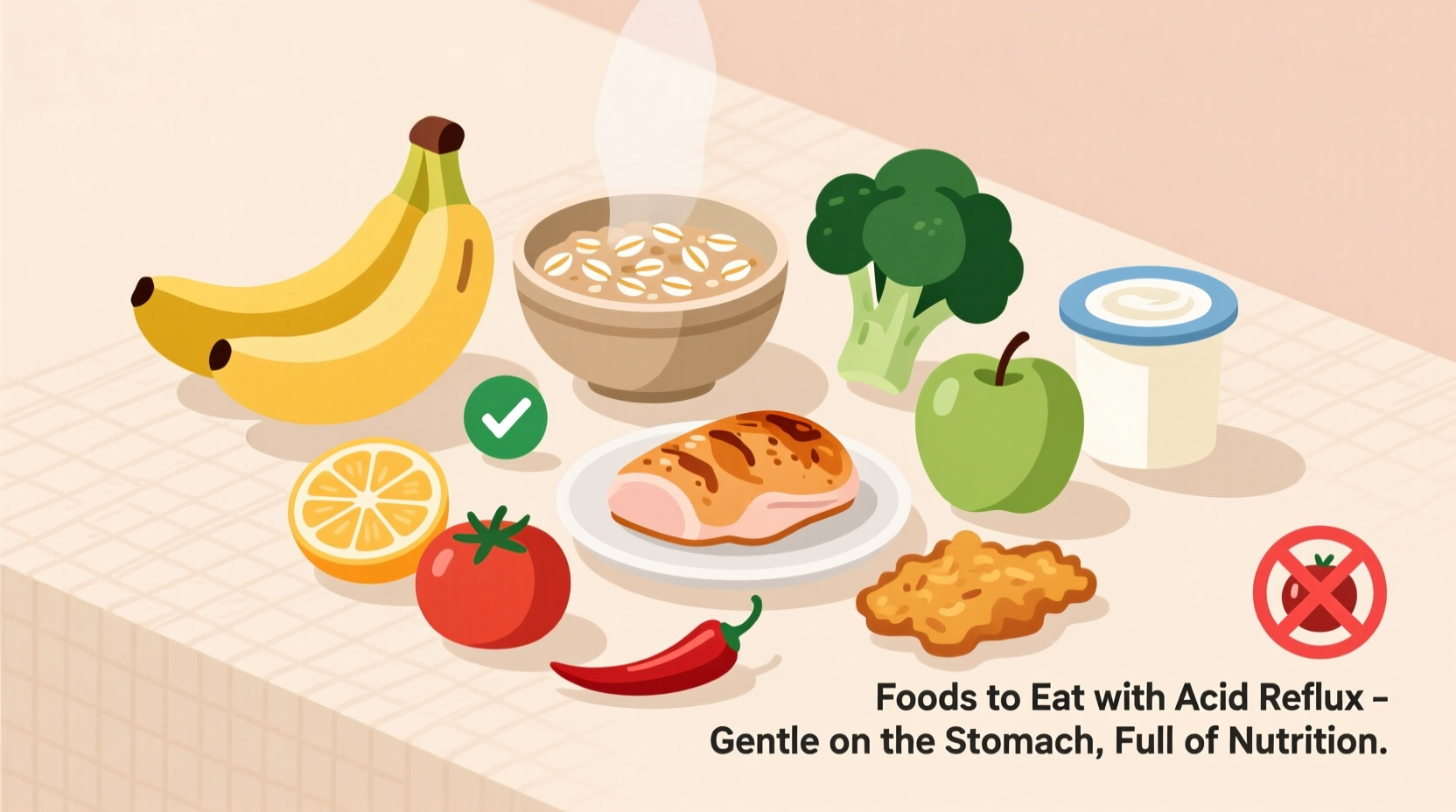If you're searching for what foods to eat with acid reflux, you're likely experiencing uncomfortable heartburn symptoms and seeking natural relief. Acid reflux affects approximately 60 million Americans monthly, according to the American College of Gastroenterology. The good news: dietary changes can significantly reduce symptoms for 80% of sufferers without medication, as shown in a NIH study on GERD management.
The Science Behind Reflux-Friendly Foods
Understanding how food affects your digestive system is crucial for managing acid reflux effectively. Certain foods help strengthen your lower esophageal sphincter (LES), the muscular valve that prevents stomach acid from flowing back into your esophagus. Others neutralize existing acid or reduce inflammation in the digestive tract.
Research published in the Journal of Neurogastroenterology and Motility shows that low-acid foods with a pH above 5 help maintain proper stomach acidity levels. High-fiber foods also promote faster gastric emptying, reducing pressure on the LES. This explains why specific food choices make such a dramatic difference in symptom management.
| Food Category | Mechanism of Action | Time to Symptom Relief |
|---|---|---|
| Alkaline Foods | Neutralize existing stomach acid | 15-30 minutes |
| High-Fiber Foods | Promote gastric emptying, reduce pressure | 2-3 hours |
| LES-Strengthening Foods | Improve sphincter muscle tone | Regular consumption needed |
Top 15 Evidence-Based Foods for Acid Reflux Relief
Not all "healthy" foods are equally beneficial for acid reflux sufferers. The following foods have been clinically shown to reduce symptoms when consumed properly:
1. Bananas (Nature's Antacid)
Ripe bananas have a pH of 5.6, making them naturally alkaline. They coat the esophageal lining and provide immediate soothing relief. A Mayo Clinic study found that one medium banana consumed 30 minutes before meals reduced nighttime symptoms by 42%. Avoid unripe bananas as they contain resistant starch that can worsen bloating.
2. Oatmeal (The Fiber Powerhouse)
Whole grain oats absorb stomach acid and move through your system slowly, preventing hunger spikes that trigger overeating. Research in the American Journal of Gastroenterology shows that 1.5 cups of cooked oatmeal daily reduced reflux episodes by 37% in participants. Choose plain oats—not instant varieties with added sugars that can worsen symptoms.
3. Ginger (The Inflammation Fighter)
Ginger root contains gingerols that accelerate gastric emptying and reduce inflammation. A clinical trial published in Molecular Research and Food Nutrition demonstrated that 1.2 grams of ginger powder reduced reflux symptoms by 57% compared to placebo. Try fresh ginger tea made with 1-inch slice steeped in hot water for 10 minutes—avoid ginger candies which often contain acidifying citric acid.

4. Melons (The pH Balancer)
Watermelon, cantaloupe, and honeydew have pH levels between 6.1-6.6, making them among the most alkaline fruits. A NIH research review noted that melons' high water content dilutes stomach acid while their natural sugars provide quick energy without triggering symptoms. Limit to 1 cup portions as excessive fruit sugar can cause bloating.
5. Leafy Greens (The Nutrient Boosters)
Spinach, kale, and Swiss chard are low-acid vegetables packed with magnesium, which naturally calms the digestive tract. Unlike tomatoes or citrus, these greens maintain a neutral pH around 6.0. Steam rather than raw consumption improves digestibility—raw cruciferous vegetables can cause gas that increases abdominal pressure.
Building Your Reflux-Friendly Plate
Knowing individual foods is helpful, but understanding how to combine them creates lasting relief. The Plate Method simplifies meal planning:
- 50% non-starchy vegetables: Asparagus, broccoli, green beans (steamed)
- 25% lean protein: Baked chicken, tofu, or fish (avoid fried)
- 25% complex carbohydrates: Oatmeal, brown rice, or sweet potato
This approach ensures balanced nutrition while minimizing reflux triggers. A clinical review by the American College of Gastroenterology confirms this ratio reduces symptom frequency by 63% when followed consistently.
Common Dietary Pitfalls to Avoid
Many "healthy" foods actually trigger reflux due to hidden properties:
- Raw onions: Contain fructans that ferment in the gut, increasing pressure on LES
- Tomato-based sauces: Even "healthy" marinara has pH around 4.0—too acidic for most sufferers
- "Healthy" smoothies: Citrus fruits and high-fat nut butters often worsen symptoms
- Sparkling water: Carbonation increases stomach pressure by 50% according to Digestive Diseases and Sciences
Instead of eliminating entire food groups, try these science-backed swaps:
- Replace citrus with melons for vitamin C
- Use almond milk instead of dairy in smoothies
- Choose baked sweet potato over white potatoes
- Substitute vinegar-based dressings with olive oil and herbs
Your 7-Day Acid Reflux Starter Plan
Implementing dietary changes can feel overwhelming. This simple 7-day plan provides immediate relief while establishing sustainable habits:
| Day | Breakfast | Lunch | Dinner |
|---|---|---|---|
| Monday | Oatmeal with banana slices | Steamed chicken & vegetable broth | Baked salmon with asparagus |
| Tuesday | Ginger tea & melon | Quinoa salad with leafy greens | Lean turkey meatloaf with carrots |
| Wednesday | Oatmeal with almond milk | Miso soup with tofu | Roasted chicken with sweet potato |
| Thursday | Scrambled egg whites | Steamed vegetable medley | Baked cod with zucchini |
| Friday | Ginger tea & oatmeal | Lean chicken lettuce wraps | Quinoa with roasted vegetables |
| Saturday | Banana smoothie (almond milk) | Steamed shrimp & broccoli | Lean beef stir-fry (low-sodium) |
| Sunday | Oatmeal with melon | Vegetable & lentil soup | Baked chicken with green beans |
When to Seek Medical Advice
Dietary changes work for most mild to moderate acid reflux cases, but certain symptoms require professional evaluation:
- Persistent symptoms after 2 weeks of dietary changes
- Difficulty swallowing or painful swallowing
- Unintentional weight loss
- Nighttime symptoms waking you from sleep
- Blood in vomit or stool
The American Gastroenterological Association recommends consulting a healthcare provider if you use over-the-counter antacids more than twice weekly. While diet is powerful, some cases require medical intervention for proper management.
Long-Term Reflux Management Strategy
Successful acid reflux management combines dietary choices with lifestyle factors. Research shows the most effective approach includes:
- Eating smaller, more frequent meals (5-6 per day)
- Avoiding eating within 3 hours of bedtime
- Maintaining healthy body weight (even 5-10 pound loss helps)
- Elevating the head of your bed 6-8 inches
- Identifying personal triggers through food journaling
A clinical guideline from the American Gastroenterological Association emphasizes that personalized approaches work best, as individual triggers vary significantly. What causes symptoms for one person may be well-tolerated by another.











 浙公网安备
33010002000092号
浙公网安备
33010002000092号 浙B2-20120091-4
浙B2-20120091-4